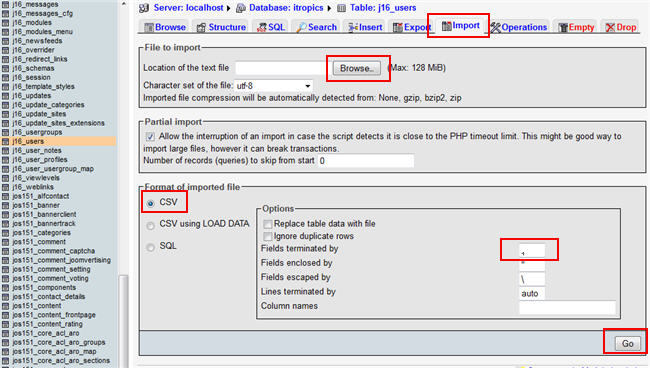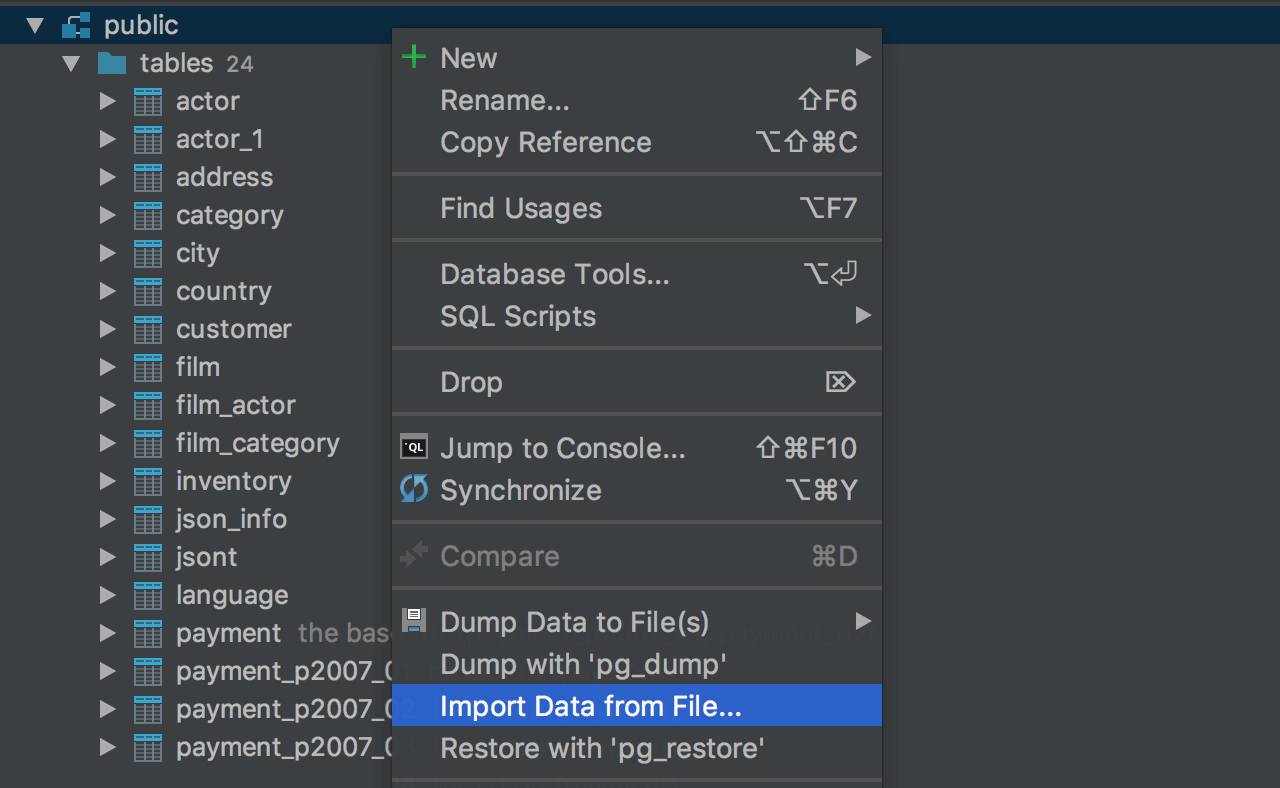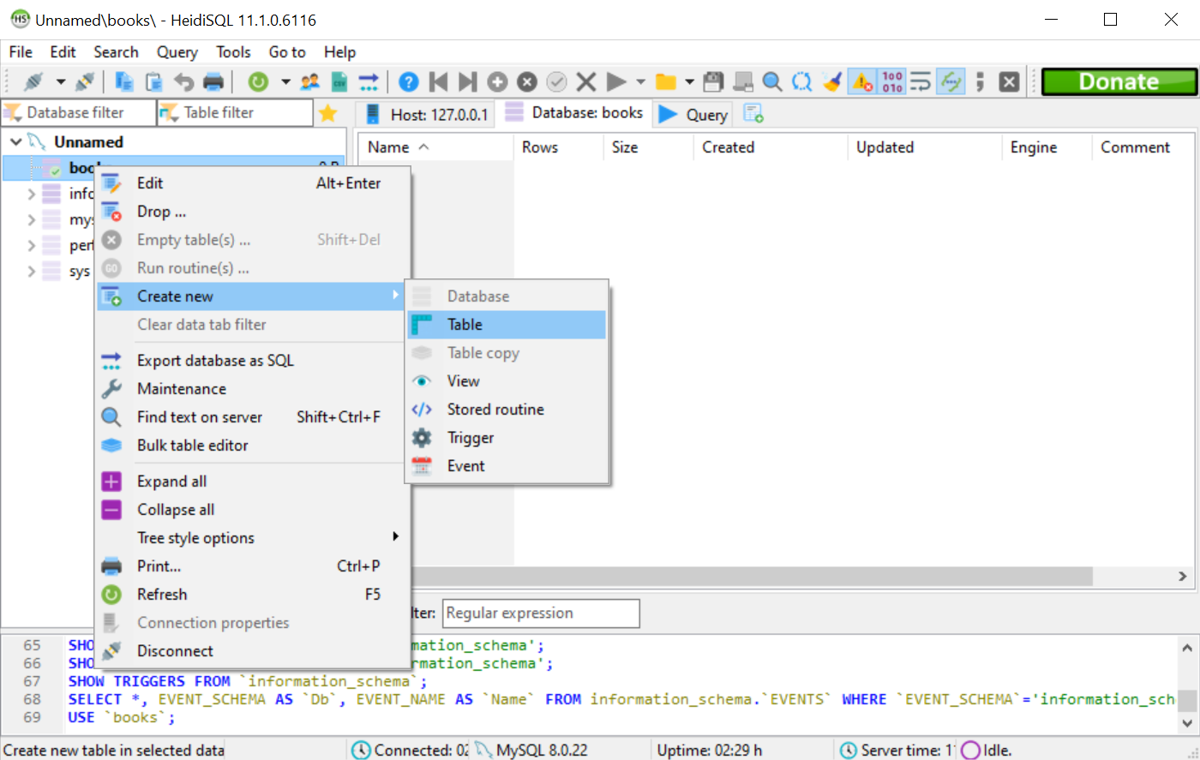
- Datagrip import csv create table driver#
- Datagrip import csv create table password#
When specifying the SECURE option, the data is transferred encrypted, but also with slower performance.
Datagrip import csv create table driver#
For importing local files, the JDBC driver opens an internal connection to the cluster and provides an HTTP or HTTPS ( SECURE-Option) server. You can also import local files from your client system.
For HTTP and HTTPS servers only basic authentication is supported.įor HTTP and HTTPS connections, HTTP query parameters can be specified by appending them to the file name.Įxample: FILE 'file.csv?op=OPEN&user.name=user'. For FTP and FTPS servers, only passive mode is supported. If the server requires encryption, then the whole data transfer is done encrypted. Datagrip import csv create table password#
Password (explicit encryption), if the server supports this.
In case of URLs starting with “ftp://”, Exasol encrypts the user name and. In case of URLs starting with “ftps://”, the implicit encryption is used. If you specify a folder, the result contains one row for each file in the given folder with one column containing the filename. Certificates are not verified for encrypted connections. The following are some of the considerations while using remote data file source: When System.in is specified as filename, data is read from the standard input streamįTP, FTPS, SFTP, HTTP, and HTTPS servers are supported whose connection data is defined through the connection_def. A BOM Byte Order Mark is not supported.Ĭompressed files are recognized by their file extension. In the CSV Data Format and the Fixblock Data Format (FBV). The source files can either be CSV or FBV files and should comply to the format specifications Specifying multiple statements is only possible for JDBC and Oracle sources. If you import data from Oracle sources ( FROM ORA, using the TABLE option), partitioned tables will be loaded in parallel. 
This means that for Exasol, loading tables directly is significantly faster than using the STATEMENT option.
Importing from Exasol databases ( FROM EXA) is always parallelized. If your remote systems expect case-sensitive syntax, you must use quote marks to delimit the table names. When using the TABLE syntax (as opposed to STATEMENT), the table name identifier is treated similarly to Exasol tables. In the second case, the expression is executed on the source database, for example, a SQL query or a procedure call. The source data can either be a database table as identifier (for example, MY_SCHEMA.MY_TABLE) or a database statement as a string (for example, 'SELECT * FROM DUAL'). For more information about adding drivers, see Driver Management. You can choose among an Exasol connection (EXA), a native connection to an Oracle database (ORA) or a JDBC connection to any database (JDBC). The following table provides you with an overview of the different elements and their meaning in the IMPORT command: Elementĭefines the database source whose connection data is specified in the connection_def. For additional information about ETL processes, refer to the ETL in Exasol section. For additional information about formatting rules for data records, refer to File Format and Details. Lines starting with # (hash) will be ignored. 
In case of an IMPORT from JDBC or CSV sources, decimals are truncated if the target data type has less precision than the source data type.For more information, refer to SELECT statement in the Query Language (DQL) section.

Import statements can also be used within SELECT queries. The progress of the data transfer can be viewed using the system table EXA_USER_SESSIONS (column ACTIVITY) through a second connection screen.







 0 kommentar(er)
0 kommentar(er)
